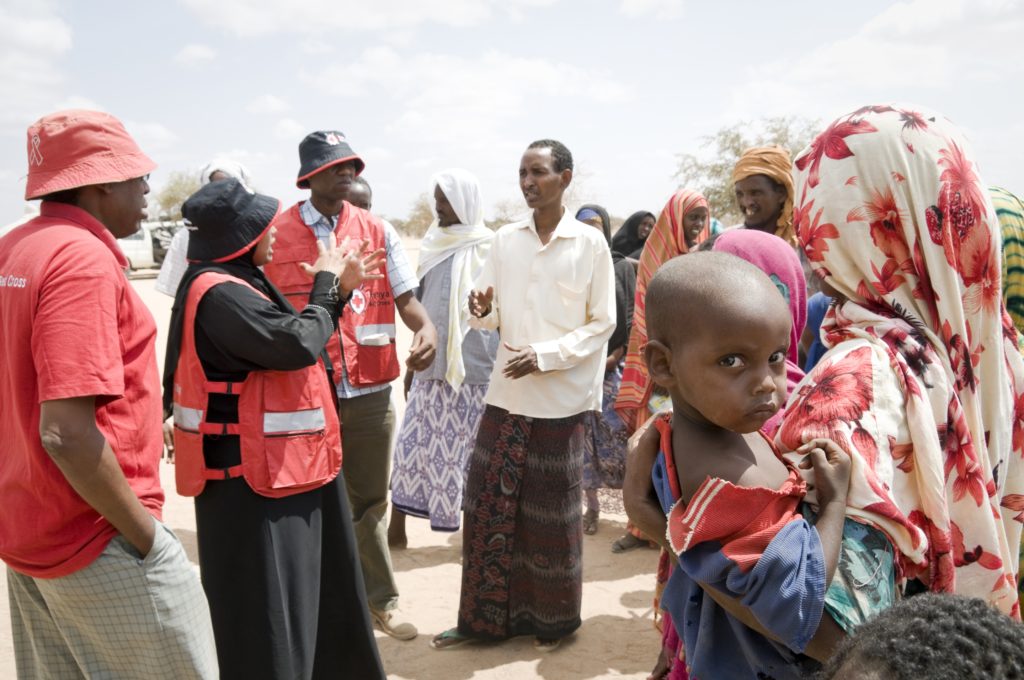Mark Owens, an American Red Cross case worker in the Restoring Family Links program, is on a two-week visit to Kenya. He is working with Red Cross colleagues in the sprawling refugee camps of Dadaab, hoping to reconnect families separated amid the crisis in the Horn of Africa. This is his second story sent from the field.
My job as Tracing Caseworker for Africa here at the American Red Cross keeps me very busy. Most of the work involves managing the flow of messages coming in from American Red Cross chapters, other National Societies, and International Committee of Red Cross (ICRC) delegations. This involves a great deal of paperwork and data entry, and rarely do I get to meet the faces behind those pieces of paper, the clients themselves. Every case has a person behind it and every one of those people has a story. Many of those stories are tragic, but one of the things I love about this job is that we often get to bring some comfort to those who have experienced tragedy.
I came to the largest refugee camp in the world because so many of the cases start or end right here in this camp. The three refugee camps known as Dadaab are home to over 400,000 refugees who have fled war and, most recently, the ravaging effects of drought and famine. I came here to witness the amazing work of our partners, the Kenyan Red Cross and the ICRC, as they help to reconnect families who have been separated by these dual scourges. While working here, I finally had the rare opportunity to meet some of the faces behind the cases that I have worked on in the past, including two children who now feel like they have their mother back, even if their only image of her is cherished photograph.
Amal (16) and her brother Abdiasis (15) were so young and traumatized when they had to flee Somalia that they barely remember anything about their home back in that war-torn country. What they do remember is bits and pieces of their journey to this refugee camp. The faint memories are violent and painful. Having been separated from their mother when their home was attacked, they fled across the border into Kenya in the care of another member of their same ethnic group. Along this journey, they were attacked by bandits who stole all of their belongings. They arrived in the camp in 2007, eventually finding out that their mother had arrived in the United States. In 2010, they met with Kenyan Red Cross volunteers and tried to contact their mother by writing her a Red Cross Message. The only details they had about their mother whereabouts was a phone number and “Washington DC.”
After conducting research, we found a possible match for their mother’s name in Seattle, Washington, not Washington DC as the children had previously thought. We were able to deliver that message to their mother and she in turn wrote them a reply, including a beautiful photograph of herself. I distinctly remembered that photograph because the people in it looked so happy. I remember taking it over to show a coworker before I sent it on to our colleagues in Kenya to be delivered to the children. That is what I knew of the case, until I met these two children in the camp.
A Kenyan Red Cross volunteer, Aadan Ali, ushered me through the maze of twisted alleyways which go between the blocks of huts made of mud, sticks, and scraps of plastic sheeting. Eventually he leads me into the well-swept earthen courtyard surrounded by a small group of mud huts. The two children come out to greet us. The young boy is shy but happy to see us. Amal is equally shy and hides a huge smile behind the photograph that I remembered so well. “We are so happy that you were able to get our message to our mother,” says Amal, “It’s like she is here with us” as she shows me the photograph and the reply message again. I ask Amal and Abdiasis what they hope for in the future. “We would love to be reunited with our mother one day” they both answer. Until that day comes, the children hold onto the beautiful photograph of their mother who is there with them in spirit even though they are separated by so many miles.

